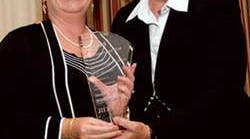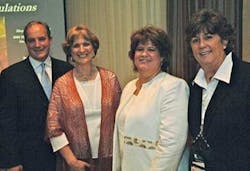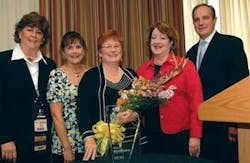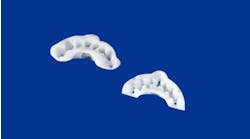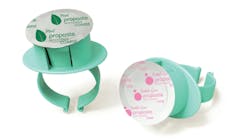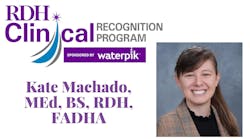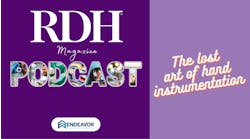To submit letters to the editor, send to: RDH, P.O. Box 3408, Tulsa, OK 74101; [email protected]; or (918) 831-9804 (fax).
Dear RDH:
In reply to "The Blood and Guts Hygienist," I think an important point was missed in response to the concerned doctor. The fact that his hygienist was working there 20 years, and he never received a complaint raises red flags for me. The previous hygienist may have not been doing a thorough job of scaling. I have been a hygienist for 29 years. While I have encountered heavy-handed hygienists, I more frequently have been the "new" hygienist for patients who have years of old sub-calc, or burnished calc from timid hygienists.
It is very difficult to thoroughly scale these patients as their tissue is inflamed from the calc. They have also come to expect an easy prophy each time they come.
On occasion, I have been the hygienist that the doctor has heard about. When I find these situations I have a difficult choice. The first is to do a minimal job and hope the patient comes back to me so I can eventually get them caught up. The second is to scale it thoroughly and remove the old calc. The third is somewhere in between and involves some delicate education.
I do not want to disparage the work of the "old hygienist," but my conscience will not allow me to neglect the oral care of my patient. Patients are becoming more savvy about their dental care and though they may find my prophy to be less comfortable than what they had in the past I find they appreciate my thoroughness and the time I took to educate them about their health. I also find that one can be thorough and scale firmly without damaging the tissue in the sulcus.
The dentist should be assesing his hygienist's work. How does the tissue look after scaling? Pick up a scaler and scale a subgingival surface. When patients come back for a filling, look at their tissue; does it look healthy? If there are still areas of redness, pick up a scaler and see if there is calc under it. The dentist and hygienist need to work together for the good of the patient.
Michelle Olson, RDH
Duluth, Minnesota
Dear RDH:
This letter is in response to the article written by Shirley Gutkowski, RDH, BSDH, FACE in the June issue of RDH magazine regarding Minimal Intervention and available remineralization technologies.
I would like to compliment Shirley on her article as it was very informative and provided good insight for dental hygienists as to when, who and how to use these new technologies.
However, I would like to mention that one of most effective remineralization technologies, NovaMin, wasn't mentioned in this article. In order to provide a complete range of remineralization options, NovaMin has to be included since NovaMin's technology has been clinically and scientifically validated at leading research organizations around the world.
NovaMin (New-Mineral) or Calcium Sodium Phosphosilicate (CSP) unlocks the secrets of how saliva protects teeth naturally, offering a "Bio-Mimetic" approach to oral care, operating in a way that is the same as the natural biological process of the mouth.
NovaMin releases high levels of Calcium and Phosphorus ions into the oral environment, and increases the oral pH to create the ideal conditions for rapid tooth remineralization. NovaMin is recognized as the only "remin" technology that directly forms hydroxyapatite, which is chemically and physically more stable than amorphous calcium phosphates.
Products Powered by NovaMin are suitable for everyone that wants to improve their overall oral care regimine, especially for people with tooth sensitivity, low salivary condition, white spot lesions, tooth erosion and gingival recession.
NovaMin is used in more product brands around the world than any other calcium phosphate technology.
Products Powered by NovaMin are available worldwide under different product brands, SootheRx, ReNew, VitalMin, Oravive, Restore, NuCare prophy paste, X-Pur, Miradent NanosensitiveHCA, SensiShield, DenShield, as well as additional products that will be launched this fall.
Carol Barnard, CDA
Clinical & Public Relations Coordinator
NovaMin Technology, Inc.
Alachua, Florida
Dear RDH:
I am writing to comment about your response to the "Concerned Doc" whose new hygienist was hurting patients as she accomplished her work (Staff Rx column, June 2008 issue). One possible reason for this was never even considered and it is an extremely important one. The concerned doctor mentioned that his previous hygienist had been with him for 20 years, and he had never had one complaint about having a painful experience. Boy, did that turn on the red warning light for me!
I have practiced dental hygiene since 1966 and have worked in all areas of this country. It's was easy to learn that, for example, in California 25 years ago, being told I was gentle was really a question: "Are my teeth really getting cleaned today?" See, even 25 years ago, the hygienists in California were trained to use anesthesia. Unfortunately, most didn't realize how rough they were when they didn't use anesthesia. But the biggest concern for me is that perhaps that former hygienist wasn't doing the job that should have been done for each and every patient.
I have to ask if this dentist ever examined the work being done by his former hygienist. Does this practice have a perio program in place? What percentage of this doctor's patients have perio problems but refuse perio treatment? Is this new "very conscientious and dedicated" hygienist finding that there are so many subgingival deposits present that she has to hurt people to do her job? Would this doctor understand her concerns if she told him that she is finding subgingival deposits in many of their patients mouths?
One of the most difficult jobs a hygienist can have is replacing a long-standing hygienist. If she is, indeed, finding old, long-standing subgingival calculus, is she afraid of losing her job by notifying her boss of this situation? Is this boss educated enough in perio to be supportive, or is he more likely to feel threatened by someone who recognizes a health problem in his practice that he may not even be aware of or even be interested in changing.
Yes, this hygienist may have heavy hands. Perhaps encouraging the use of ultrasonics would help both the hygienist and the patients. But, please, let's not ignore the fact that it may be a problem because of poor care given by a former hygienist. Any of us who have been in this situation know how difficult it can be to do what is right for the patient without conflicting with our ethical concerns too. And this is a problem that would have to be dealt with by both the doctor and the hygienist as a team dedicated to improving patients dental, and therefore, overall health.
Judith Pearl, RDH, BS
San Antonio, Texas
Where's the Survey?
For several years, RDH magazine printed its questionnaire for the annual Salary & Benefits survey (the results were published each January) in the August issue. Many readers completed the questionnaire and returned their information. The information, of course, was instrumental to accuracy of the magazine's annual article on dental hygiene salaries.
This year, the survey can be completed online at www.rdhmag.com. The electronic newsletter, RDH eVillage, will also contain a link to the survey. Please take a moment to complete the questions as you have in years past.
Correction
In the June installment of our series on Minimal Intervention by Shirley Gutkowski, RDH, the amino acid arginine as incorrectly spelled as aginine. We regret the error.
